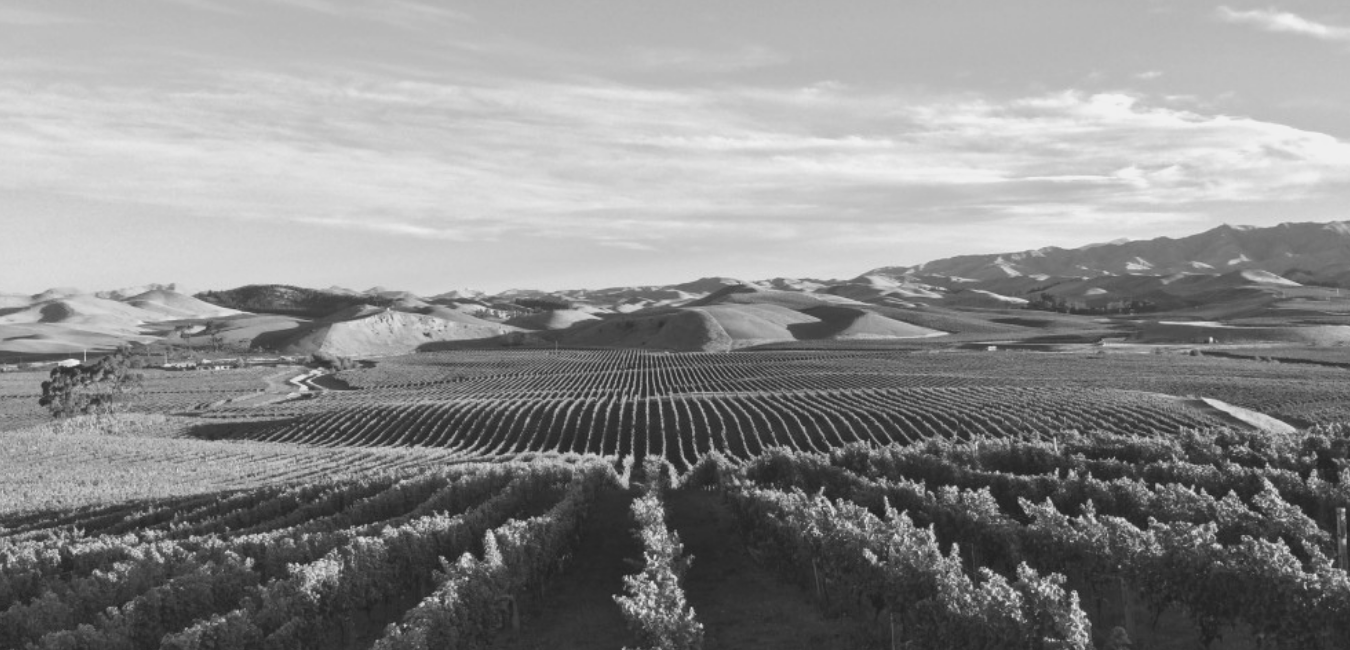VINHO VERDE & TERRAS DO MINHO
QUINTA DA LIXA
Established in 1986, Quinta da Lixa is owned and operated by the Meireles family. Although the wine produced was originally sold in bulk, they soon realized the potential of their vineyards and began releasing their own Vinho Verdes composed of Arinto, Trajadura and lourreiro and also, from a small vineyard, a 100% premium Alvarinho from a small vineyard.
CASA DE COMPOSTELA
DOURO
BARÃO DE VILAR
Barão (Baron) de Vilar was established in 1828 when the royal title was conceded to the Kopke and van Zeller families. The two families played a significant role in the development of the Douro Valley and are considered to be the founding fathers of the Port market. In 1996, current Baron Fernando van Zeller decided to trademark “Barão de Vilar” and put the name on his Ports and other top quality wines. He wants to celebrate and perpetuate the family’s tradition as well as the ancestral vinification. Previously, the family owned Quinta do Noval.
MARITÁVORA
Quinta de Maritavora’s vineyards have belonged to Manuel Gomes Mota’s family for 150 years. In 2004, Manuel started bottling his wines, using grapes from his incredibly old vines as well as from newer plantings. His property is small, just nine hectares, and the wines are of the very best quality, including his Reserva white made from 100+ year-old vines. All of his reds are crushed in old 'lagares', which are still in use from the family’s original winery. Manuel partners with renowned Portuguese wine maker Jorge Serodio Borges to produce Maritavora wines.
QUINTA DO INFANTADO
João Roseira and his sister Catherine run this beautiful estate once owned by the Prince (Infantado) of Portugal. They believe in natural products (it is a chemical free farm). They obtained the stamp Organic wine in 2009. For João, it is important to make the ports in lagares (open stone vats where the grapes are crushed by foot); it gives the old style elegance that a stainless still tank will never achieve. Thanks to the lagares, the deep-coloured ports are obtained by a very high ratio of skins to must. At Infantado, the brandy addition is a partial process that takes place in the lagar. In the absence of any cooling, doing it bit by bit prevents the temperature rising and damaging the fruit. It also causes the yeast to work more slowly and facilitates an enhanced extraction from the skins.
QUINTA NOVA DE SENHORA DO CARMO
The Amorim family has invested dearly to rejuvenate this splendid estate planted of 85 hectares of A-rated vineyards producing exclusive table and port wines. They also rebuilt and refurbished the gorgeous 18th century Manor, transforming it into a country hotel. Besides other investments, across the world, Amorim is recognised as the leading supplier of natural, high-quality cork products.
BAIRADA & DAO
CAVES SÃO JOÃO
“Caves São João seemingly endless underground tunnels of wine-bins are stacked high with bottles – Caves São João, may well hold the largest stock of old unfortified wine in Portugal. And it’s very good wine.” Extract from ‘The Food and Wine Lovers Guide to Portugal.’ Charles Metcalfe and Kathryn McWhirter 2008.
RIBATEJO & ALENTEJO
TIAGO CABAÇO
SETUBAL & PALMELA
CASA ERMELINDA FREITAS
Besides their fruity and very smooth wine produced on the sandy soil of the Setubal peninsula, south of Lisboa, the particularity of this family-run business founded in the early 20th century is that it always has been run by women! Today, Leonor Freitas, daughter of Ermelinda is at the helm.
PRIORAT
SANGENÍS I VAQUÉ
Porrera
Bodegas Sangenís I Vaqué was founded in 1978 by Pere Sangenis and Conxita Vaque in Porrera, Priorat. Minimal intervention is the philosophy: no treatment no pesticide, handpicked and bottled unfined and unfiltered. Purest expression of the terroir! The remote village of Porrera, meaning fear in Catalan, takes its name from the inhospitable and wild environment where the wolves used to feed on ships and even sometimes on travellers or pilgrims.
CIMS DE PORRERA
Porrera
Cims is Catalan for summits. This geography plays an integral part with the wines of Cims de Porrera. Each vineyards sit on the steep, rocky slopes above the village of Porrera in the D.O.Q. Priorat, at an altitude of 400 to 600 meters. This rugged terrain demands meticulous harvesting by hand, and wines remain with their separate vineyard blocks until final blending. The combination of unique black slate soils, a rich variety of micro-climates and vines older than 60 years results in widely-recognized wines of exceptional quality.
NAVARRA
SEÑORIO DE SARRIÁ
Puente La Reina
This bodega, located in Puente la Reina and founded in 1950, is a symbol of the Navarrese winemaking sector. It lies near the Pilgrim's Way to Santiago in the heart of Valdizarbe, one of the most propitious areas for growing vines in the 'Navarra' Designation of Origin (D.O.), with outstanding climatic and soil conditions for producing wines of exceptional quality. With more than 210 hectares of vineyards of numerous grape varieties, the bodega uses Tempranillo, Graciano, Cabernet Sauvignon and Merlot to make its reds, Garnacha for its rosés and Chardonnay for its whites. All its red wines are aged in oak casks and bottled on the property.
LA RIOJA
SIERRA DE TOLOÑO
Guardia
Located in the heart of the Rioja Alavesa in Labastida (600m altitude) Sierra de Tolono was born of the passion of a young woman Sandra Bravo Marin. Before settling down Sandra worked as an oenologist in many wine regions: Bordeaux, Tuscany, New Zealand, California, Priorat.
RIBERA DEL QUEILES
GUELBENZU
Vierlas
In 1851, the Guelbenzu family presented wine, olive oil and wheat at the First Universal Exposition in London’s Prince Albert Hall. Product quality was the family's aim from the inception of its business. In 2001, the family discovered and acquired a unique quaternary gravel deposit, a short way up the Queiles River Valley in the village of Vierlas. Emphasizing this unique terroir, the resulting wines are complex blends of red-grape varieties.
RUEDA
PALACIO DE BORNOS
Valladolid
The winery was founded and began elaborating wine in 1870 in the town of La Seca. In the late-nineteenth century, its wines were well known throughout Castilla; the winery expanded both its national and international markets during the twentieth century. In 1976, the fifth generation of the Sanz family broke away from the family tradition and started its own project, constructing a new winery in the town of Rueda and beginning the most recent history of Palacio de Bornos. After more than 30 years of solid work, Palacio de Bornos has become one of the most widely renowned brands in the DO Rueda, and is present in the major markets worldwide.
RIBERA DEL DUERO
BODEGAS HERMANOS PÉREZ PASCUAS
Pedrosa de Duero
Convinced of the excellent potential of the vineyards owned by their father, Mauro Pérez, the 3 Pérez Pascuas brothers founded their bodega in 1980 striving to produce top quality wines. Instrumental in the development of the Ribera Del Duero appellation, today, Bodegas Hermanos Pérez Pascuas has achieve a worldwide recognition. The winery vinifies its own grapes (Tinto Fino and a small amount of Cabernet Sauvignon) from 135 hectares of vineyards located in Pedrosa de Duero, a town with a winemaking tradition that spans over hundred years.
TORO
BODEGAS FARIÑA
Zamora
The estate was fouded in 1942, but it is Manuel Farina, second generation winemaker, who was among the first to revolucionized the spanish wine industry. He is regarded as the founding father of Toro appellation in 1987. Today the destiny of the estate relies and the capable hand of his son Manu.
ALMANSA
BODEGA SANTA CRUZ DE ALPERA
The Bodega Santa Cruz from Alpera, belongs to the denominación de origen Almansa. It is east of Albacete with an altitude between 900 and 1100 meters with limestone and shallow soils. This Winery with over 60 years of experience is mainly engaged in the production of Garnacha Tintorera (Alicante Bouchet) and minority varieties such as Tempranillo, Syrah and other. Some of these vineyards are engrafted with well over 60 years old vines.
LA MANCHA
MONTALVO WILMOT
Argamassilla de Alba
On the estate of “Los Cerrillos”, located in the Guadiana valley, under the shadows of the Peñarroya Castle, the Montalvo Wilmot family carefully manicures every vine of Tempranillo, Cabernet-Sauvignon and Syrah grapes and produce their wines following a centenary tradition, which originates with the growing of the grapes when Los Cerrillos was the centre of the Great Priory of St. John of Jerusalem.
SIERRAS DE MALAGA
DESCALZOS VIEJOS
Ronda
The winery was founded with the restoration of the chapel of the Convent of S. Trinity XVI of the same name, where are the processing area and the barrel room. The contrast of the walls of the "church" with tanks and barrels holds a special magic that permeates the environment. The winery has 6.00 hectares of vineyards cultivated hillside own red grape varieties (Cabernet Sauvignon, Syrah, Grenache, Merlot and Petit Verdot), located beneath the cornice of the Tajo de Ronda (650 m. high) and 1 Ha of chardonnay.















